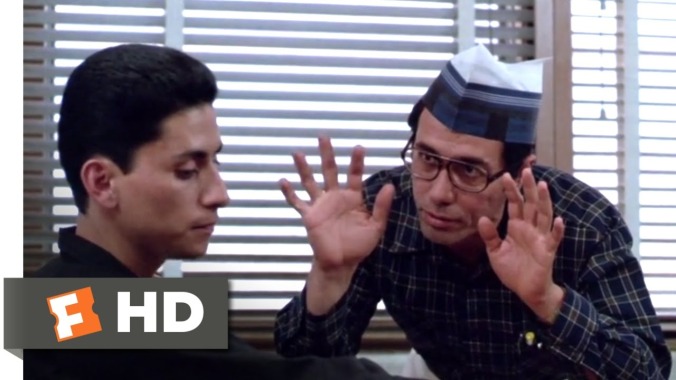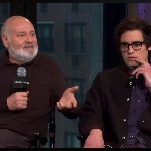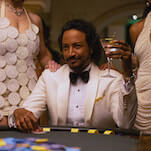Finding common ground with Stand And Deliver 30 years later

In 1982, 18 students at Garfield High School in East Los Angeles passed the Advanced Placement Calculus test, which was unprecedented for a predominantly Latino school in California. Rather than applaud the tireless efforts of the students—and their teacher, the late Jaime Escalante—the Educational Testing Service asked 14 of them to retake the test. The testing body claimed it grew suspicious of the results after learning that the students made the same errors on one problem and wrote nearly identical solutions to others Twelve of them agreed to take the test again, and 12 of them passed it again, thereby reinstating their original scores.
I was a toddler when the story broke, and still just in grade school when the movie it inspired, Stand And Deliver, premiered in 1988. It wasn’t until I was in junior high that I saw Ramón Menéndez’s movie for the first time, when I watched it with my predominantly Mexican-American classmates in our mostly Mexican-American magnet school, which was located Chicago’s largest Mexican-American neighborhood. It’s not that the film hadn’t made waves upon its release—Edward James Olmos scored an Oscar nomination for his portrayal of Escalante, and the cast included Lou Diamond Phillips, who was coming off a well-received turn in La Bamba. It’s just that growing up in a large family made the cost of going to the movies prohibitive, and my parents were intent on buying a house. So unless Marty McFly or this fictional teacher was going to pony up a down payment, we were just going to have to be content with watching Dynasty at home.
My junior-high math teacher showed it to my class to demonstrate what we could achieve with hard work. I remember being struck by the brown faces, especially Phillips’, because I was deep in the throes of my La Bamba- and Young Guns-born crush. But at the time, students in Chicago Public Schools were grouped by ability (my teacher friends and siblings tell me they still are, but covertly) so my class was full of overachievers who were the scholastic opposite of the students played by Phillips, Vanessa Marquez, and Ingrid Oliu (who went on to star in another great coming-of-age-in-the-barrio story, Real Women Have Curves)—at the beginning, anyway.
The math teacher’s plan didn’t fail, we just felt she was preaching to the choir. Most of the kids in my class, myself included, had it drilled into them to behave well and study hard. But the goal of that “academic excellence” strategy was avoidance. Our parents just didn’t want us to end up in manual labor jobs or working grueling night shifts. Having never been to college themselves, they could only steer us away from something, not guide us toward a successful future. Menéndez’s film shares that predicament—its “stay in school” message is much more compelling and elegantly delivered than a PSA, but it doesn’t advise much beyond that. It’s not that the movie feels incomplete; just think of this as the aspirational film’s corollary to the happy ending audiences are expected to conjure upon a romantic film’s conclusion.
My junior-high math teacher showed it to my class to demonstrate what we could achieve with hard work. I remember being struck by the brown faces.
For its 30th anniversary, I rewatched Stand And Deliver, and the movie’s opening was full of familiar sights: kids half-awake on city buses, day laborers making their way to some as-yet-unknown job site early in the morning, storefronts covered in bilingual signage. But my sister and I weren’t 10 minutes into the movie before we were shaking our heads ruefully as a school official (Virginia Paris, playing a composite character) informs Jaime Escalante (Olmos) that he won’t be teaching computer science after all. Garfield High lacks the necessary funding, so Escalante is stuck teaching remedial math—though not for long.
What a difference two decades and an act of Congress make. After that first viewing of Stand And Deliver, there was no discussion or even recognition of racial biases in standardized testing, or of the strained resources of public schools in low-income neighborhoods, contentious topics the mostly white faculty certainly wasn’t going to raise. Besides, within the characters’ arc, which took them from flailing to passing with flying colors, I saw myself as an “after,” if anything. My parents were just as poor as those in the movie, my neighborhood just as populated with Mexicans, who, instead of low-riders, drove cars emblazoned with paintings of Jesus or La Virgen De Guadalupe. But I’d always tested well beyond my grade level and aced the extra credit portions of tests. I loved school; I had perfect attendance until the sixth grade. Looking back, I was probably seen as proof that those biases didn’t exist, that a school which had once issued warnings about the lead paint peeling off the walls didn’t necessarily prevent kids from doing well.
Olmos is perfectly cast as the scrappy educator, setting the standard for the teacher who gives a damn, a character seen in Lean On Me, Dead Poets Society, and lesser entries in this subgenre, like The Principal and Dangerous Minds. (Lean On Me and Dangerous Minds also took inspiration from real-life teachers, but probably wouldn’t have been green-lit without the success of Stand And Deliver.) But as Escalante, he’s also aware that passion isn’t the only thing needed to make a difference in these kids’ lives. He highlights their common ground, using slang and pop culture references (gee, wonder why he thought that’d work), and switching from Spanish to English as needed. I didn’t notice this the first time, but the kids who only speak Spanish and are brought to the front of the class are quietly weeded out, never to be seen or heard from again. Math is a universal language, the script for Menéndez and Tom Musca insists, but only if you’re bilingual. This isn’t a failing in their part—the scene is just a subtle reminder of how the public school system’s one-size-fits-all approach leaves so many behind.






















![HBO teases new Euphoria, Larry David, and much more in 2026 sizzle reel [Updated]](https://img.pastemagazine.com/wp-content/avuploads/2025/12/12100344/MixCollage-12-Dec-2025-09-56-AM-9137.jpg)

















